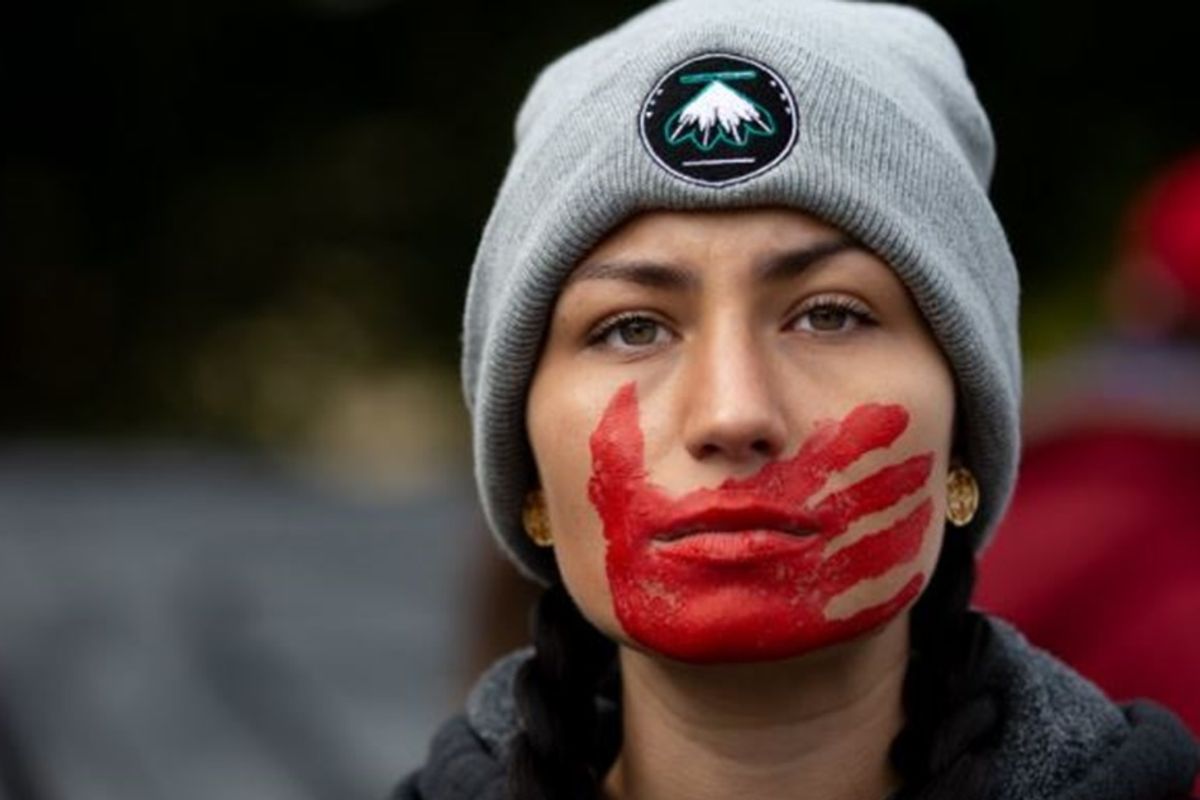Congress passes a landmark bill to help stop the epidemic of violence against Indigenous women

The epidemic of violence against Indigenous women in America is one of the country's most disturbing trends. A major reason it persists is because it's rarely discussed outside of the native community.
According to the Centers for Disease Control, murder is the third-leading cause of death among American Indian and Alaska Native women under age 19.
Women who live on some reservations face rates of violence that are as much as ten times higher than the national average.
The problem stems from a lack of community resources, prejudice, poverty, and poor communication between Native communities and law enforcement.

Many women disappear from remote reservations without a single law enforcement officer. "The resources are spread so thin, it allows people to fall through the cracks," Billy J. Stratton, an expert in Native American studies at the University of Denver, told CNN.
But the problem goes much deeper than law enforcement.
"When you're talking about a group of people who is among the lowest socioeconomic class in the US, they're more susceptible to violence than others," Stratton said.
"Poverty is the main driver; dispossession, lack of empowerment, isolation, and those other social problems I think flow from that," he added.
Violence against Native people also gets very little attention from the mainstream media.
"I live on a reservation, it's word of mouth. We can report [someone missing or dead] to the authorities," Tillie Aldrich, an Omaha Tribe of Nebraska member, told Teen Vogue.
"If we have a non-Native [person] missing in a city 25 miles north of us, it's all over the news, the newspapers, posters going up," she continued. "If we have someone missing, one of our Native missing, they try to keep it quiet."
The response to cases of violence against native American women is so poor that in 2016 there were 5,712 cases reported of missing and murdered Indigenous women and girls, but only 116 cases were logged by the Department of Justice database.
However, a new bill passed by Congress hopes to reverse this trend in violence and law enforcement inaction.
On Monday, the House of Representatives passed Savanna's Act, which will go to the desk of President Trump for final approval.
The bill is named after Savanna LaFontaine-Greywind, a member of the Spirit Lake Sioux Tribe from Fargo, North Dakota. In 2017, at the age of 22, while eight months pregnant her unborn child was cut out of her womb and she was murdered. The baby survived.
The bill requires federal, state, tribal, and local law enforcement agencies to update policies and protocols to address missing or murdered Native Americans.
It also requires the U.S. Department of Justice to develop new guidelines for response to missing or murdered Native people and provide database training to law enforcement agencies at all levels.
"Savanna's Act addresses a tragic issue in Indian Country and helps establish better law enforcement practices to track, solve and prevent these crimes against Native Americans," Senator John Hoeven, chairman of the Senate Committee on Indian Affairs, said in a statement.
"We appreciate our House colleagues for passing the bill today and sending it on to the president to become law," the statement continues. "At the same time, we continue working to advance more legislation like this to strengthen public safety in tribal communities and ensure victims of crime receive support and justice."
"Passage of Savanna's Act brings us one step closer to ending this epidemic by upgrading critical data and improving communication among law enforcement," Republican Representative from Montana Greg Gianforte said in a statement.
The bill is a positive first step toward combating the issue of missing and murdered Indiginous women, but much more will have to be done before the problem is solved.
"Stopping the #MMIW [Missing and Murdered Indigenous Women] crisis will take years and maybe decades," Sarah Deer, Muscogee, a professor at the University of Kansas, told Teen Vogue.
"It must be a multi-faceted movement led by family members of missing Indigenous women," she added. "Those families are the experts on this crisis and should be the leaders of the movement."
- A juice company dumped orange peels in a national park. Here's ... ›
- Canada has acknowledged its genocide of Indigenous women ... ›
- A photographer captured a track star's powerful MMIW statement ... ›
- Indigenous woman dies in Canadian hospital after filming racist taunts from nurses - Upworthy ›
- A juice company dumped orange peels in a national park. Here's what it looks like now. - Upworthy ›
- Yurok Tribe becomes first to co-manage National Parks land - Upworthy ›

